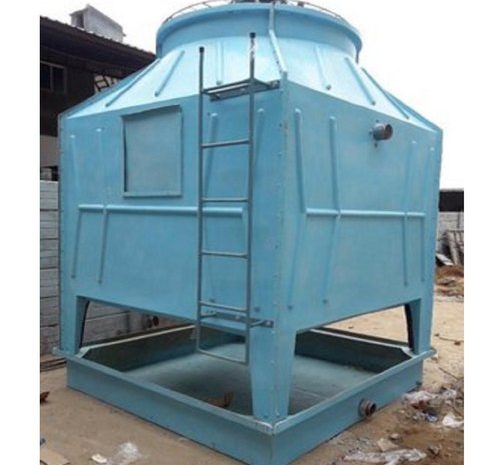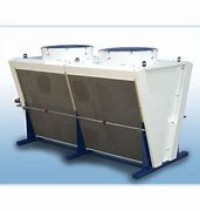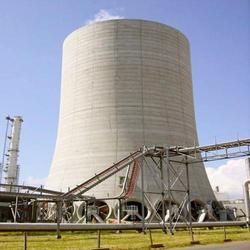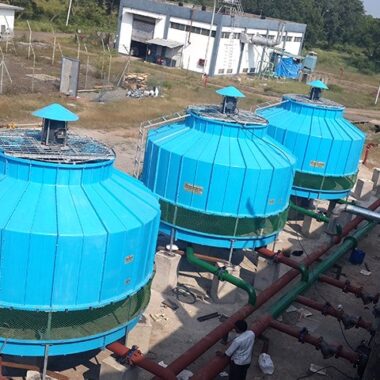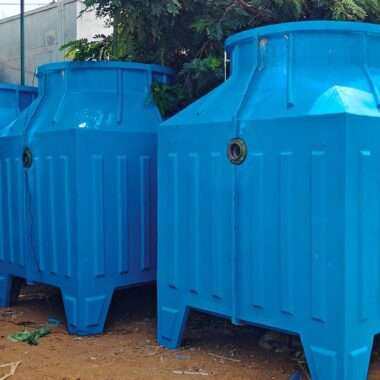Induced draft Cooling Towers – Overview
An induced draft cooling towers, Known as heat transfer device. It is used to remove waste heat from industrial processes, power plants, and other large-scale applications. It operates by using the principle of evaporative cooling, where water is used to remove heat from a process. And then circulated through the cooling tower to dissipate the heat into the atmosphere.
Working Principle
In an induced draft cooling tower, a fan is located at the top of the tower. It pulls air through the tower and out the top. And creating a negative pressure or suction effect as well. The air is drawn through the tower, passing over the water distribution system and heat exchange media. Also, causing the water to evaporate and transfer heat from the process to the atmosphere. The cooled water is then collected at the bottom of the tower and recirculated back to the process.
The use of an induced draft cooling tower is an efficient and cost-effective way to remove large amounts of waste heat from industrial processes and power plants. Additionally, This helping to improve the overall efficiency of these operations.
Advantages of Induced draft cooling tower
- Effective cooling: Induced draft cooling towers are highly effective at cooling water. It makes them suitable for use in a variety of industrial applications.
- Reduced maintenance: Require less maintenance than natural draft cooling towers. Because they have fewer components and are less susceptible to damage from wind or other weather conditions.
- Lower operating costs: These are energy efficiency. Therefore, they can be less expensive to operate than natural draft cooling towers. It can help to reduce overall operating costs.
- Improved safety: There is less risk of hot air or steam being released from the tower, which can improve safety for workers and reduce the risk of equipment damage.


